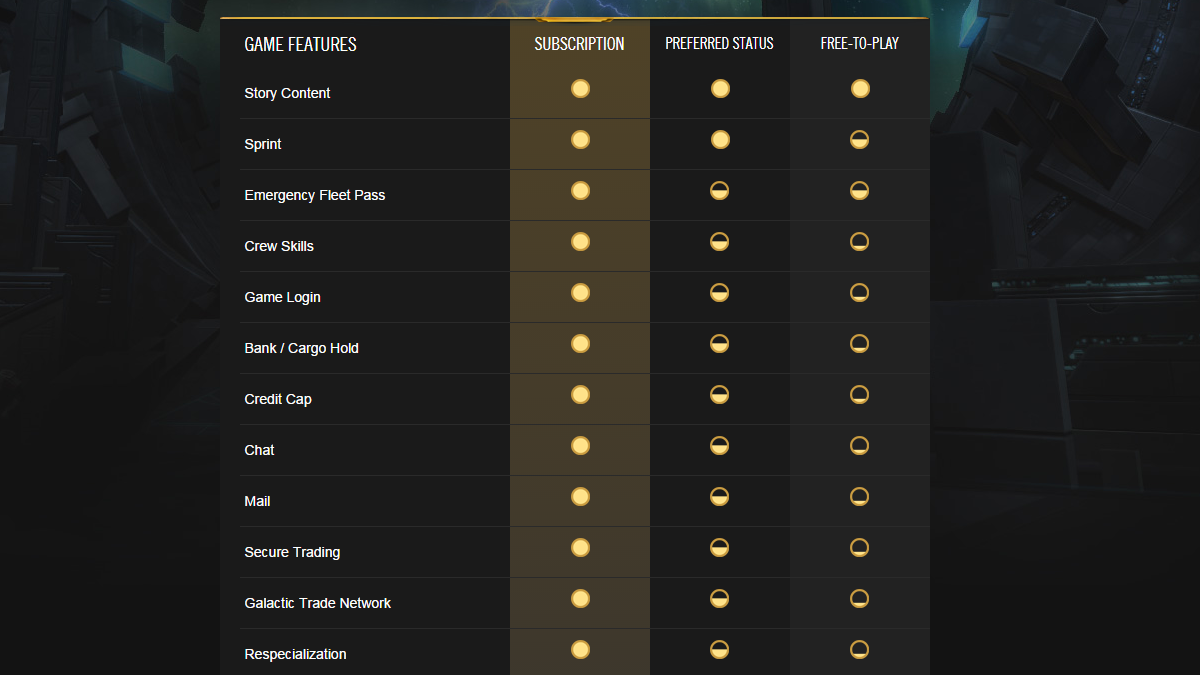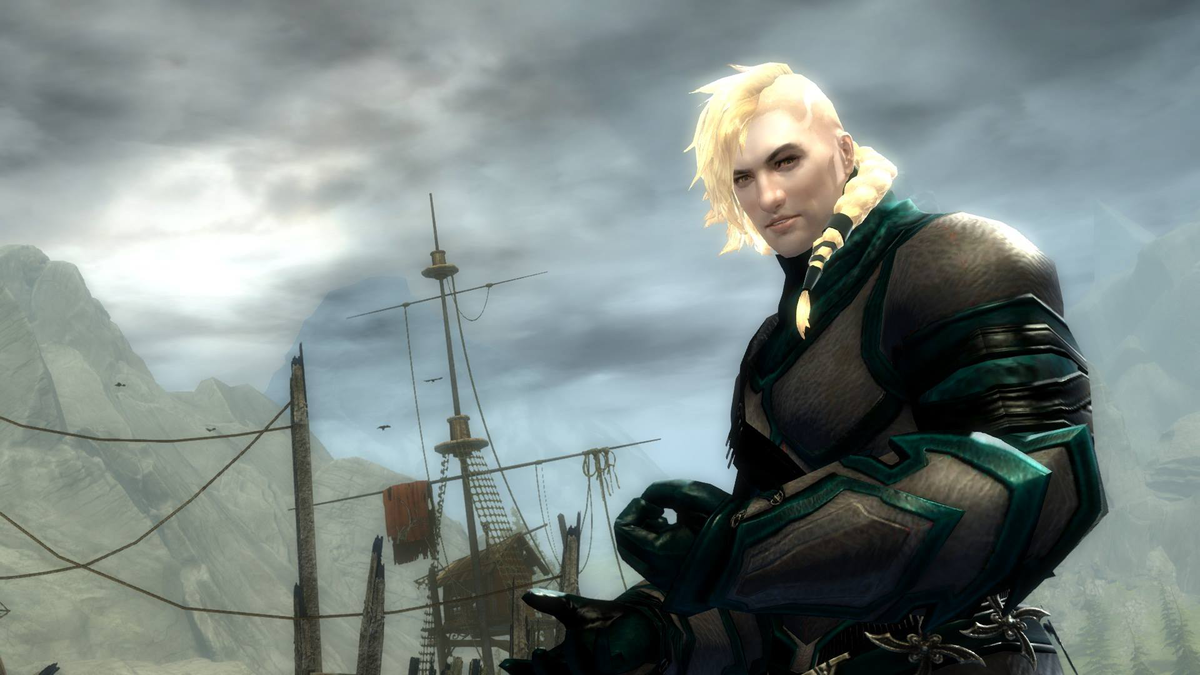I’m a lover of this entire genre, not necessarily the payment models that the developers in it choose to adopt. Whether it’s free to play, buy to play or subscription, if the game is good it’ll be supported by me financially in any way that I’m able to provide the developer with money. Out of the three models, I really have no preference and have games that cover all three areas, whether it’s the free to play of SMITE, buy to play of Guild Wars 2 or the subscription of WildStar. What I am acutely aware of, however, are the limitations on the subscription model and how in this day and age it’s instantly a turnoff for large swathes of players. Out of all three payments models, Free to Play still remains my least favourite but I need to caveat that by stating that only in this genre do I dislike it. When it comes to PlanetSide 2 or DOTA 2, the free to play model is brilliant. It’s brilliant because the companies behind these games don’t seek to nickle and dime you at every corner. Instead, they provide you with a level playing field that doesn’t seek to permanently extract money from you. The approach they choose to adopt is to simply provide you with a good store that has items you can drool over. Better still, the pricing of these is fair. Where SMITE and PlanetSide 2 are concerned, I’ve probably spent about £20 across both games on a specific skin that I’ve liked the love of despite playing both for hundreds of hours. The is exactly how a free to play title should be: lowering the cost of entry for the masses so that income is fairly derived when they fall in love with the game.
In contrast, many free to play massively multiplayer games choose an alternative path where the play experience is neutered to such a degree you’re almost forced to part with your cash. Even looking at Star Wars the Old Republic, my heart just sinks when I see the restrictions that they place on players. Not allowing new players to Sprint, revive more than 5 times or the freedom to just gain experience at a normal rate is just bonkers. If I was new to the genre and new to Star Wars the Old Republic, what would these restrictions placed upon me say about the game and the company behind it if they’re so willing to hinder my progress before I’ve even got my foot in the door?

It isn’t surprising, then, to hear so many players in this genre despise the thought of the game they currently play making a shift from subscription to free to play. All they want to do is know that their subscription is all they need to hand over for the full experience without having to hand over more money or face the prospect of the game they love becoming swarmed with people who have little care for the community or product, but simply want to burn some time. The frustrating issue here is that a free to play title doesn’t have to cripple its player experience in order to generate revenue, with Guild Wars 2 the perfect example as to how to do it properly.
Admittedly Guild Wars 2 is a buy to play game but the principles surrounding ArenaNets monetization could apply just as well to any free to play or subscription title. The key difference is that not only did ArenaNet deliver a solid product straight out the gates, but its buy to play model stood apart from the competition. Admittedly the initial box price for many was costly (just like any other video game) and it likely limited Guild Wars 2’s initial appeal in comparison to that of a free to pay title, but ArenaNet have proved not only is their income in a buy to play model but that there’s enough to generate free additional content at a breakneck pace. No other company in the genre, despite also charging a subscription has even come close to matching ArenaNet’s output. How then can they justify also charging a subscription?
What’s also best about ArenaNet’s model of obtaining income is its fairness (all items on the Trading Post are cosmetic) but the fact that if you want to take a break until a future patch, you can. There’s no requirement to then hand over further money when you return or to scour for information as to how good the game currently is because you can just jump back in at any time. The only catch is that the new Living World story is 200 Gems per chapter but entirely free to unlock if you logged in for only a second during its release period. I think this is not only fair, but at 200 Gems it’s also super cheap. All four Chapters cost as little as £8.50 for hours worth of content.
So why are so many massively multiplayer developers unwilling to go the buy to play route and more importantly, when their product is failing as a subscription, why go free to play? I don’t think there’s a simple answer. I think developers must have a fear that if they make their game buy to play and people are already under the impression, those individuals won’t be willing to invest in a box purchase. As a result, they go into panic mode in an effort to open the floodgates and turn on the free to play switch.
I’m convinced that free to play no more opens the door for income than buy to play. Yes it lowers the entry barrier but there still has to be a hook and a store in place for players to use. In addition, the initial box sale is lost (this is significant) and I often think that free to play titles with their swathes of micro transactions become far more intimidating and can, as a result, have a reverse effect. When players want to know they’re getting value for money in all areas of the game, the last thing they want to do is constantly have to keep handing over money.

Part of me thinks that developers avoid buy to play because they think it’s harder work when in actual fact, it’s so much easier. Just make your game as you wish, choose a sensible price point for the box sale and implement a cosmetic store. Simple. If you want to earn additional income, you can then provide a Gem system (similarly to Guild Wars 2) or charge small sums for content packs. Better yet, you’d assign a team to continually pump out snazzy costumes and items that make the player base drool and seek to part with their cash. You only have to look at Team Fortress 2 as a perfect example of the effectiveness of this strategy.
Most importantly of all, though, when it comes to the buy to play model is the fact that it’s a good deal for both publisher and developer. The developer can have confidence in the fact that they’re free to make the game of their choosing, right down to its systems (without having to create pay-gated content) while the publisher is rewarded with an initial revenue stream from box sales and a steady income from micro transactions. Better still, if box sales become flat they still have the flexibility to reduce the price of the game or offer a free trial. It’s a win-win scenario.
If we take a look at WildStar as a recent example, it perfectly fits a buy to play model and with the CREDD system in place and the existing use of costumes, the transition surely wouldn’t be difficult. All Carbine need to do is put up a store with some unique hoverboards and armor and their income would rocket. Carbine would also be able to offer a free trial and reduce the box price in the process. Better yet, those who have left the game could merrily march back to Nexus to check out what’s happening. Sadly, there are currently swathes of players interested in WildStar, but unwilling to stump up $15 just to see if it has gotten any better.
Until massively multiplayer game companies treat free to play fairly, just like other genres, it’ll never truly take off and it will never shed the image it currently has. If it means that instead developers choose to pursue buy to play, well that’s definitely a good thing because Guild Wars 2 really does have the right balance.
To read the latest guides, news, and features you can visit our Guild Wars 2 Game Page.




